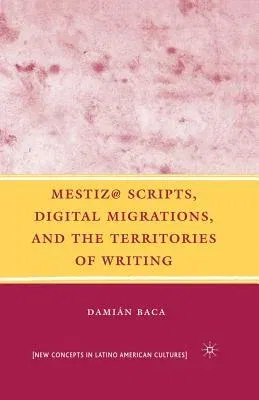D Baca
(Author)Mestiz@ Scripts, Digital Migrations, and the Territories of Writing (2008)Paperback - 2008, 15 May 2008

Qty
1
Turbo
Ships in 2 - 3 days
In Stock
Free Delivery
Cash on Delivery
15 Days
Free Returns
Secure Checkout
Part of Series
New Directions in Latino American Cultures
Part of Series
New Directions in Latino American Cultures (Paperback)
Part of Series
New Concepts in Latino American Cultures
Print Length
210 pages
Language
English
Publisher
Palgrave MacMillan
Date Published
15 May 2008
ISBN-10
1349372692
ISBN-13
9781349372690
Description
Product Details
Author:
Book Edition:
2008
Book Format:
Paperback
Country of Origin:
NL
Date Published:
15 May 2008
Dimensions:
21.59 x
13.97 x
1.27 cm
ISBN-10:
1349372692
ISBN-13:
9781349372690
Language:
English
Location:
New York
Pages:
210
Publisher:
Series:
Weight:
276.69 gm

